“Meet Lucifer’s new librarian…”
— Gavin Baddeley, author of Lucifer Rising
ROMANTIC SATANISM
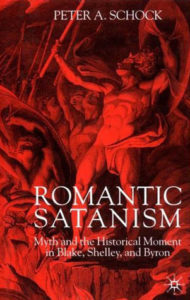 Spearheaded by English Romanticism’s literary and artistic élite, Romantic Satanism was the most radical reevaluation of the arch-rebel—and thereby the most intriguing cultural challenge to the status quo—in Western history. Initiated in the 1790s and reaching its apex in “the Satanic School” presided over by Romantic icons Byron and Shelley in the early nineteenth century, Romantic Satanism restored luster to Lucifer’s much tarnished name and image. The following books investigate the cultural context of Romantic Satanism and the Romantic Satanists’ celebration of the Miltonic Devil as a sociopolitical icon of idealized defiance.
Spearheaded by English Romanticism’s literary and artistic élite, Romantic Satanism was the most radical reevaluation of the arch-rebel—and thereby the most intriguing cultural challenge to the status quo—in Western history. Initiated in the 1790s and reaching its apex in “the Satanic School” presided over by Romantic icons Byron and Shelley in the early nineteenth century, Romantic Satanism restored luster to Lucifer’s much tarnished name and image. The following books investigate the cultural context of Romantic Satanism and the Romantic Satanists’ celebration of the Miltonic Devil as a sociopolitical icon of idealized defiance.
Simon Bainbridge, Napoleon and English Romanticism (1995)
William D. Brewer, The Shelley-Byron Conversation (1994)
Leslie Brisman, Milton’s Poetry of Choice and Its Romantic Heirs (1973)
Marilyn Butler, “Romantic Manichaeism: Shelley’s ‘On the Devil, and Devils’ and Byron’s Mythological Dramas,” in The Sun is God: Painting, Literature and Mythology in the Nineteenth Century, ed. J. B. Bullen (1989)
——————, Romantics, Rebels and Reactionaries: English Literature and its Background, 1760–1830 (1981)
Paul A. Cantor, Creature and Creator: Myth-making and English Romanticism (1984)
Stuart Curran, “The Siege of Hateful Contraries: Shelley, Mary Shelley, Byron, and Paradise Lost,” in Milton and the Line of Vision, ed. Joseph Anthony Wittreich, Jr. (1975)
Kenneth Gross, “Satan and the Romantic Satan: a notebook,” in Re-Membering Milton: Essays on the Texts and Traditions, eds. Mary Nyquist and Margaret W. Ferguson (1987)
Calvin Huckabay, “The Satanist Controversy of the Nineteenth Century,” in Studies in English Renaissance Literature, ed. Waldo F. McNeir (1962)
John Hutton, “ ‘Lovers of Wild Rebellion’: The Image of Satan in British Art of the Revolutionary Era,” in Blake, Politics, and History, eds. Jackie DiSalvo, G. A. Rosso, and Christopher Z. Hobson (1998)
Peter J. Kitson, “Milton: The Romantics and After,” in A Companion to Milton, ed. Thomas N. Corns (2001)
Linda M. Lewis, The Promethean Politics of Milton, Blake, and Shelley (1992)
Jerome J. McGann, Byron and Romanticism, ed. James Soderholm (2002)
——————, Don Juan in Context (1976)
——————, Fiery Dust: Byron’s Poetic Development (1968)
——————, The Romantic Ideology: A Critical Investigation (1983)
Lucy Newlyn, Paradise Lost and the Romantic Reader (1993)
Fred Parker, The Devil as Muse: Blake, Byron, and the Adversary (2011)
Mario Praz, The Romantic Agony, trans. Angus Davidson (1933)
Charles E. Robinson, Shelley and Byron: The Snake and Eagle Wreathed in Flight (1976)
Peter A. Schock, Romantic Satanism: Myth and the Historical Moment in Blake, Shelley, and Byron (2003)
Jonathon Shears, The Romantic Legacy of Paradise Lost: Reading against the Grain (2009)
Christopher Small, Ariel like a Harpy: Shelley, Mary, and Frankenstein (1972)
Truman Guy Steffan, Lord Byron’s Cain: Twelve Essays and a Text with Variants and Annotations (1968)
Peter L. Thorslev, Jr., The Byronic Hero: Types and Prototypes (1962)
Clara Tuite, Lord Byron and Scandalous Celebrity (2015)
Nicola Trott, “Milton and the Romantics,” in A Companion to Romanticism, ed. Duncan Wu. Malden (1998)
Joseph Anthony Wittreich, Jr. (Ed.), The Romantics on Milton: Formal Essays and Critical Asides (1970)
MILTONIC SATANISM
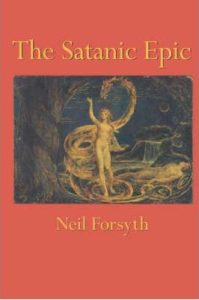 The greatest inspiration to Romantic Satanism was undeniably Milton’s Satan. While the Puritan poet Milton wrote Paradise Lost as a grand Christian epic intended to “justify the ways of God to men,” the Romantic Satanists found that Milton—inadvertently or otherwise—had with his unparalleled portrait of the fallen archangel crafted the most sympathetic and sublime Satan ever to be. Paradise Lost divided its critics into opposing camps of “Satanists” and “anti-Satanists,” and the following selection investigates their central argument over Satan’s claim to hero status.
The greatest inspiration to Romantic Satanism was undeniably Milton’s Satan. While the Puritan poet Milton wrote Paradise Lost as a grand Christian epic intended to “justify the ways of God to men,” the Romantic Satanists found that Milton—inadvertently or otherwise—had with his unparalleled portrait of the fallen archangel crafted the most sympathetic and sublime Satan ever to be. Paradise Lost divided its critics into opposing camps of “Satanists” and “anti-Satanists,” and the following selection investigates their central argument over Satan’s claim to hero status.
John Carey, Milton (1969)
——————, “Milton’s Satan,” in The Cambridge Companion to Milton, ed. Dennis Danielson (1999)
William Empson, Milton’s God (1961)
Robert Thomas Fallon, Divided Empire: Milton’s Political Imagery (1995)
Neil Forsyth, “Satan,” in The Cambridge Companion to Paradise Lost, ed. Louis Schwartz (2014)
——————, The Satanic Epic (2003)
G. Rostrevor Hamilton, Hero or Fool? A Study of Milton’s Satan (1944)
Davis P. Harding, The Club of Hercules: Studies in the Classical Background of Paradise Lost (1962)
Frank S. Kastor, Milton and the Literary Satan (1974)
Margaret Kean (Ed.), John Milton’s Paradise Lost: A Sourcebook (2005)
Watson Kirkconnell, The Celestial Cycle: The Theme of Paradise Lost in World Literature with Translations of the Major Analogues (1952)
Laura Lunger Knoppers and Gregory M. Colón Semenza (Eds.), Milton in Popular Culture (2006)
John Leonard, Faithful Labourers: A Reception History of Paradise Lost, 1667–1970, Volume II: Interpretative Issues (2013)
David Loewenstein, Milton: Paradise Lost (1993)
——————, “The Radical Religious Politics of Paradise Lost,” in A Companion to Milton, ed. Thomas N. Corns (2001)
Benjamin Myers, Milton’s Theology of Freedom (2006)
James G. Nelson, The Sublime Puritan: Milton and the Victorians (1963)
Stella Purce Revard, The War in Heaven: Paradise Lost and the Tradition of Satan’s Rebellion (1980)
Nancy Rosenfeld, The Human Satan in Seventeenth-Century Literature: From Milton to Rochester (2008)
John M. Steadman, Milton’s Epic Characters: Image and Idol (1959)
——————, Milton and the Paradoxes of Renaissance Heroism (1987)
——————, Milton and the Renaissance Hero (1967)
A. J. A. Waldock, Paradise Lost and Its Critics (1947)
R. J. Zwi Werblowsky, Lucifer and Prometheus: A Study of Milton’s Satan, intro. C. G. Jung (1952)
Blair Worden, “Milton’s republicanism and the tyranny of heaven,” in Machiavelli and Republicanism, eds. Gisela Bock, Quentin Skinner, and Maurizio Viroli (1990)
THE MILTONIC – ROMANTIC SATAN IN THE VISUAL ARTS
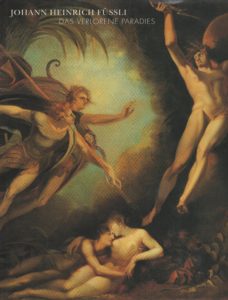 Traditionally, just as Lucifer lost his luminous name as he was exiled from Heaven, so too had he lost his brilliance and beauty, the refulgent angelic prince’s magnificent face and form marred as he was cast down into Hell. In contrast to traditional Christian iconography, which served to humble the Prince of Pride, Romantic artists—taking Milton’s epic hero Satan as their guiding image—portrayed Lucifer as a truly handsome Devil. The following works explore the history of Milton illustration, namely the Romantic reimagining of the Satan of Paradise Lost.
Traditionally, just as Lucifer lost his luminous name as he was exiled from Heaven, so too had he lost his brilliance and beauty, the refulgent angelic prince’s magnificent face and form marred as he was cast down into Hell. In contrast to traditional Christian iconography, which served to humble the Prince of Pride, Romantic artists—taking Milton’s epic hero Satan as their guiding image—portrayed Lucifer as a truly handsome Devil. The following works explore the history of Milton illustration, namely the Romantic reimagining of the Satan of Paradise Lost.
Stephen C. Behrendt, The Moment of Explosion: Blake and the Illustration of Milton (1983)
Eric C. Brown, Milton on Film (2015)
Luisa Calè, Fuseli’s Milton Gallery: “Turning Readers into Spectators” (2006)
Gustave Doré, Doré’s Illustrations for “Paradise Lost” (1993)
Roland Mushat Frye, Milton’s Imagery and the Visual Arts: Iconographic Tradition in the Epic Poems (1978)
Martin Myrone, Henry Fuseli (2001)
Marcia R. Pointon, Milton & English Art (1970)
Nancy L. Pressly, The Fuseli Circle in Rome: Early Romantic Art of the 1770s (1979)
William L. Pressly, The Life and Art of James Barry (1981)
Gert Schiff, Henry Fuseli, 1741 – 1825 (1975)
Peter Tomory, The Life and Art of Henry Fuseli (1972)
Robert Woof, Howard J. M. Hanley, and Stephen Hebron, Paradise Lost: The Poem and its Illustrators (2004)
DIABOLOGY
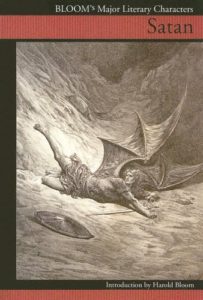 The Devil is the arch-villain of Christendom, yet remains one of the most fascinating figures in the Western world. Satan swiftly escaped his role as the abstract embodiment of evil, the rich legend of Lucifer—the angel who aspired to dethrone the Deity and was damned to Hell for his rebellion—captivating writers and artists over centuries past. The following books study the Devil in history, literature, and art, most significantly examining Milton’s portrayal of Satan as a sublime arch-rebel and the Romantic Satanists’ radical celebration of him as a symbol of revolt.
The Devil is the arch-villain of Christendom, yet remains one of the most fascinating figures in the Western world. Satan swiftly escaped his role as the abstract embodiment of evil, the rich legend of Lucifer—the angel who aspired to dethrone the Deity and was damned to Hell for his rebellion—captivating writers and artists over centuries past. The following books study the Devil in history, literature, and art, most significantly examining Milton’s portrayal of Satan as a sublime arch-rebel and the Romantic Satanists’ radical celebration of him as a symbol of revolt.
Ruth Nanda Anshen, The Reality of the Devil: Evil in Man (1972)
Eva Marta Baillie, Facing the Fiend: Satan as a Literary Character (2014)
Harold Bloom (Ed.), Satan (2005)
Paul Carus, The History of the Devil and the Idea of Evil (1900)
Richard Cavendish, The Black Arts (1967)
Neil Forsyth, The Old Enemy: Satan and the Combat Myth (1987)
Henry Ansgar Kelly, Satan: A Biography (2006)
Christopher Nugent, Masks of Satan: The Demonic in History (1983)
Joan O’Grady, The Prince of Darkness: the Devil in History, Religion and the Human Psyche (1989)
Elaine Pagels, Adam, Eve, and the Serpent (1988)
——————, The Origin of Satan (1995)
Maximilian Rudwin, The Devil in Legend and Literature (1931)
Jeffrey Burton Russell, Mephistopheles: the Devil in the Modern World (1986)
Hannes Vatter, The Devil in English Literature (1978)
Richard Woods, The Devil (1973)
T. J. Wray and Gregory Mobley, The Birth of Satan: Tracing the Devil’s Biblical Roots (2005)
MODERN SATANISM
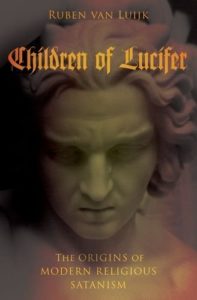 Satanism was officially codified as a modern religious philosophy in the 1960s, but the concept did not simply appear magically out of a puff of smoke. Satanism’s roots reach deep into the Western world’s past, most significantly into the Satan of Paradise Lost and the radical tradition of Romantic Satanism Milton’s apostate angel inspired. The following books on the subject of Satanism dig up these roots, among other things investigating the extent to which modern Satanism is indebted to and departs from the Miltonic-Romantic-Satanic tradition.
Satanism was officially codified as a modern religious philosophy in the 1960s, but the concept did not simply appear magically out of a puff of smoke. Satanism’s roots reach deep into the Western world’s past, most significantly into the Satan of Paradise Lost and the radical tradition of Romantic Satanism Milton’s apostate angel inspired. The following books on the subject of Satanism dig up these roots, among other things investigating the extent to which modern Satanism is indebted to and departs from the Miltonic-Romantic-Satanic tradition.
Gavin Baddeley, “Damnation and a Day: Satanism,” in The Gospel of Filth: A Bible of Decadence & Darkness (2010)
——————, Lucifer Rising: Sin, Devil Worship & Rock ‘n’ Roll (1999)
Asbjørn Dyrendal, James R. Lewis, and Jesper Aa. Petersen, The Invention of Satanism (2016)
Per Faxneld and Jesper Aa. Petersen, The Devil’s Party: Satanism in Modernity (2013)
Ruben van Luijk, Children of Lucifer: The Origins of Modern Religious Satanism (2016)
Chris Mathews, Modern Satanism: Anatomy of a Radical Subculture (2009)
VERTIGO’S LUCIFER
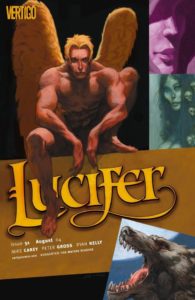 Lucifer is the mature fantasy series of DC Comics’ Vertigo imprint—spun off from Neil Gaiman’s The Sandman—and its titular angelic anti-hero Lucifer Morningstar is the true heir of the Miltonic-Romantic Satan. Lucifer ran for 75 issues under writer Mike Carey between 1999 and 2006, and in late 2015 the series was renewed with Holly Black at the helm. A lordly, liberty-loving Lucifer in relentless pursuit of absolute autonomy, the fallen angel has not been portrayed in such a Romantic light since the heyday of Romantic Satanism.
Lucifer is the mature fantasy series of DC Comics’ Vertigo imprint—spun off from Neil Gaiman’s The Sandman—and its titular angelic anti-hero Lucifer Morningstar is the true heir of the Miltonic-Romantic Satan. Lucifer ran for 75 issues under writer Mike Carey between 1999 and 2006, and in late 2015 the series was renewed with Holly Black at the helm. A lordly, liberty-loving Lucifer in relentless pursuit of absolute autonomy, the fallen angel has not been portrayed in such a Romantic light since the heyday of Romantic Satanism.
Holly Black, Lucifer, Vol. 1: Cold Heaven (2016)
——————, Lucifer, Vol. 2: Father Lucifer (2017)
Mike Carey, Lucifer: Book One (2013)
——————, Lucifer: Book Two (2013)
——————, Lucifer: Book Three (2014)
——————, Lucifer: Book Four (2014)
——————, Lucifer: Book Five (2014)
——————, Lucifer, Vol. 1: Devil in the Gateway (2001)
——————, Lucifer, Vol. 2: Children and Monsters (2001)
——————, Lucifer, Vol. 3: A Dalliance with the Damned (2002)
——————, Lucifer, Vol. 4: The Divine Comedy (2003)
——————, Lucifer, Vol. 5: Inferno (2004)
——————, Lucifer, Vol. 6: Mansions of the Silence (2004)
——————, Lucifer, Vol. 7: Exodus (2005)
——————, Lucifer, Vol. 8: The Wolf Beneath the Tree (2005)
——————, Lucifer, Vol. 9: Crux (2006)
——————, Lucifer, Vol. 10: Morningstar (2006)
——————, Lucifer, Vol. 11: Evensong (2007)